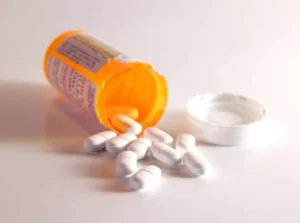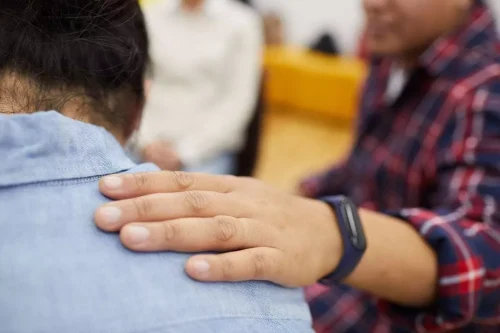
This is especially important for alcohol, GHB (gamma hydroxybutyrate), GBL (gamma butyrolactone), or benzodiazepines, as these can be dangerous to stop using on your own. Older adults or people who’ve used meth for a long time may experience more severe, longer-lasting symptoms. Here’s a closer look at meth withdrawal, including how long it lasts and how to manage it. It’s also dangerous to combine meth with other stimulants, like cocaine.
5 myths about using Suboxone to treat opioid addiction
- Methamphetamine, or meth, is a powerful stimulant that can make you feel more awake and active.
- You experience mental and physical effects (withdrawal) if you stop taking the drug.
- Although there are varying levels of insurance coverage, the Affordable Care Act (ACA) requires insurance companies to cover at least some portion of addiction treatment by law.
- This may exacerbate their mental disorder in the long run, as well as increase the risk of developing addiction.43,44 Treatment for all conditions should happen concurrently.
Therapists and doctors can help people identify factors that may have contributed to a methamphetamine use disorder and recognize environmental or emotional cues that trigger meth cravings. Meth treatment centers can help people gain insight into their addiction and learn to effectively cope with life’s challenges throughout their recovery. Medications are also available to help treat addiction to alcohol and nicotine.
Myth #4: Suboxone isn’t treatment for addiction if you aren’t getting therapy along with it.

Researchers say overdose deaths linked to meth increased fourfold over the last decade. “It’s progress and it’s quite significant,” says Dr. Nora Volkow, director of the National Institute on Drug Addiction, which funded the two-year clinical trial involving roughly 400 patients. The average stay for meth rehab is less than 90 days.11 Stays longer than 90 days are typically not as beneficial as shorter stays. After completing inpatient treatment, your treatment team will decide which level of follow-up care is appropriate for you. Having a stable, substance-free, and supportive home environment is also crucial for outpatient treatment success.
Treatments
Find out if insurance is able to cover all or part of the cost of rehab and medications used in treatment. The study also showed that the headset, which zaps the brain, was able to improve symptoms in 64.2 per cent of the patients involved in the trial. The treatment relieves all symptoms of depression in more than half of patients (57.5 per cent) in just 10 weeks, the research suggests. Knowing the importance of therapy will help you to encourage your loved ones to seek professional assistance.
Overcoming Addiction: Find an effective path toward recovery
- Take our free, 5-minute substance misuse self-assessment below if you think you or someone you love might be struggling with substance use.
- Others may need admission to a hospital or a residential treatment center.
- Her work spans various health-related topics, including mental health, fitness, nutrition, and wellness.
- Withdrawal symptoms are “also dependent on individual brain chemistry, so each person can experience withdrawal differently,” Acheson says.
When you have an addiction, you can’t stop using a drug, regardless of any negative consequences. Addiction can occur with or without physical dependence on the drug. Listen to Greenhouse Treatment Center’s Gary Malone, MD discuss the role of therapy in addiction treatment. Joe Hilton, 41, who has a problem with heroin and methamphetamine, tried the experimental treatment after rehab and 12-step meetings could not stop him from relapsing. Scientists have embarked on a radical experiment to use “zapping” to reset cells inside the brain to try and help people addicted to drugs or alcohol.
Stopping drug use is just one part of a long and complex recovery process. When people enter treatment, addiction has often caused serious consequences in their lives, possibly disrupting their health and how they function in their family lives, at work, and in the community. While relapse is a normal part of recovery, for some drugs, it can be very dangerous—even deadly. If a person uses as much of the drug as they did before quitting, they can easily overdose because their bodies are no longer adapted to their previous level of drug exposure. An overdose happens when the meth abuse person uses enough of a drug to produce uncomfortable feelings, life-threatening symptoms, or death. Volkow says one theory is that naltrexone reduced physiological cravings for meth, while buproprion’s “antidepressant effects” eased the anxiety people experience when they stop using.
What are the principles of effective treatment?

“It’s easier to have a more optimistic perspective because we don’t have anything that works right now,” Jordan said. When you stop using meth, though, your brain is left without enough dopamine or serotonin, causing withdrawal symptoms. These symptoms fade as your brain replenishes its store of dopamine and serotonin. Keep in mind that your behavior while using meth, like not eating or drinking water, can make your withdrawal symptoms more severe.

Inpatient or residential options involve you staying at a 24-hour facility with intensive professional care, including medical supervision. There, you will likely participate in education sessions, individual and group counseling, and behavior therapies. Addiction requires individualized treatments and modalities that address the symptoms and underlying causes of the disease, as well as the consequences that substance use has on different areas of a person’s life.
